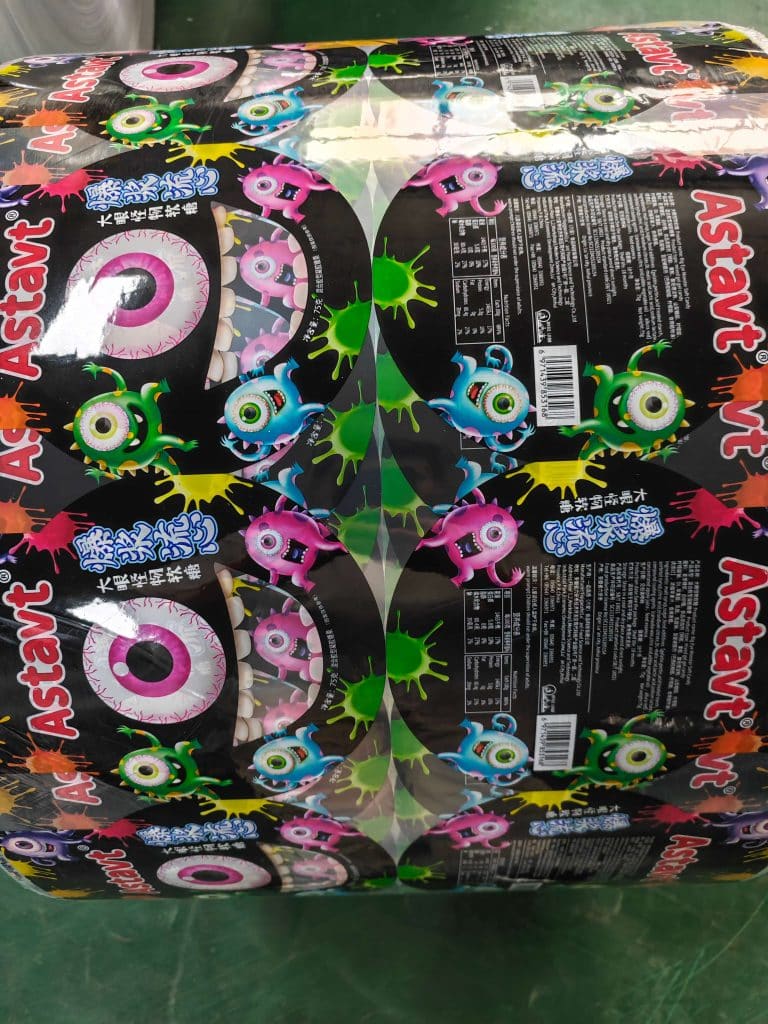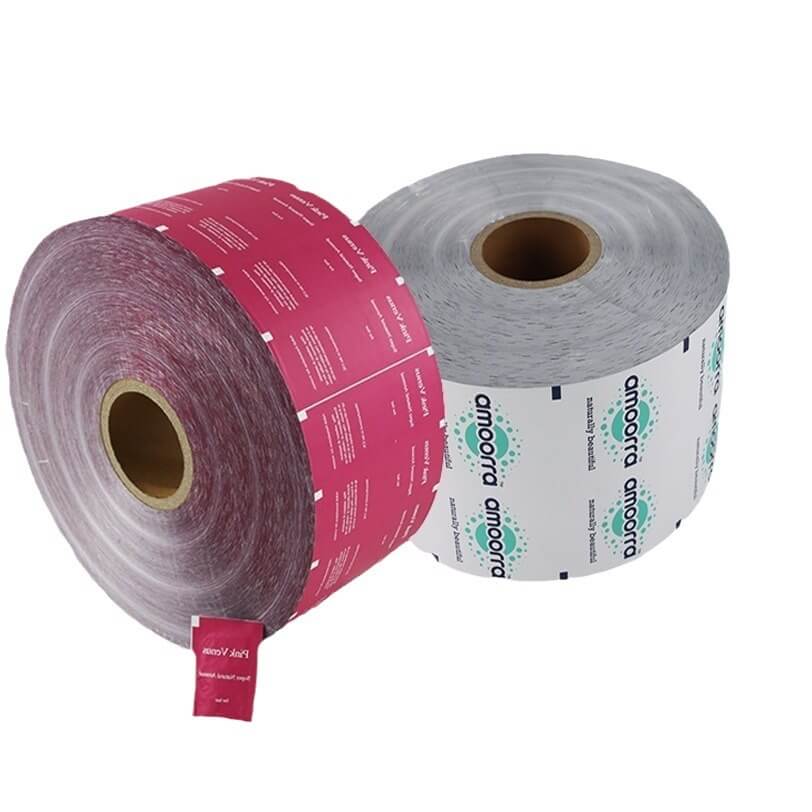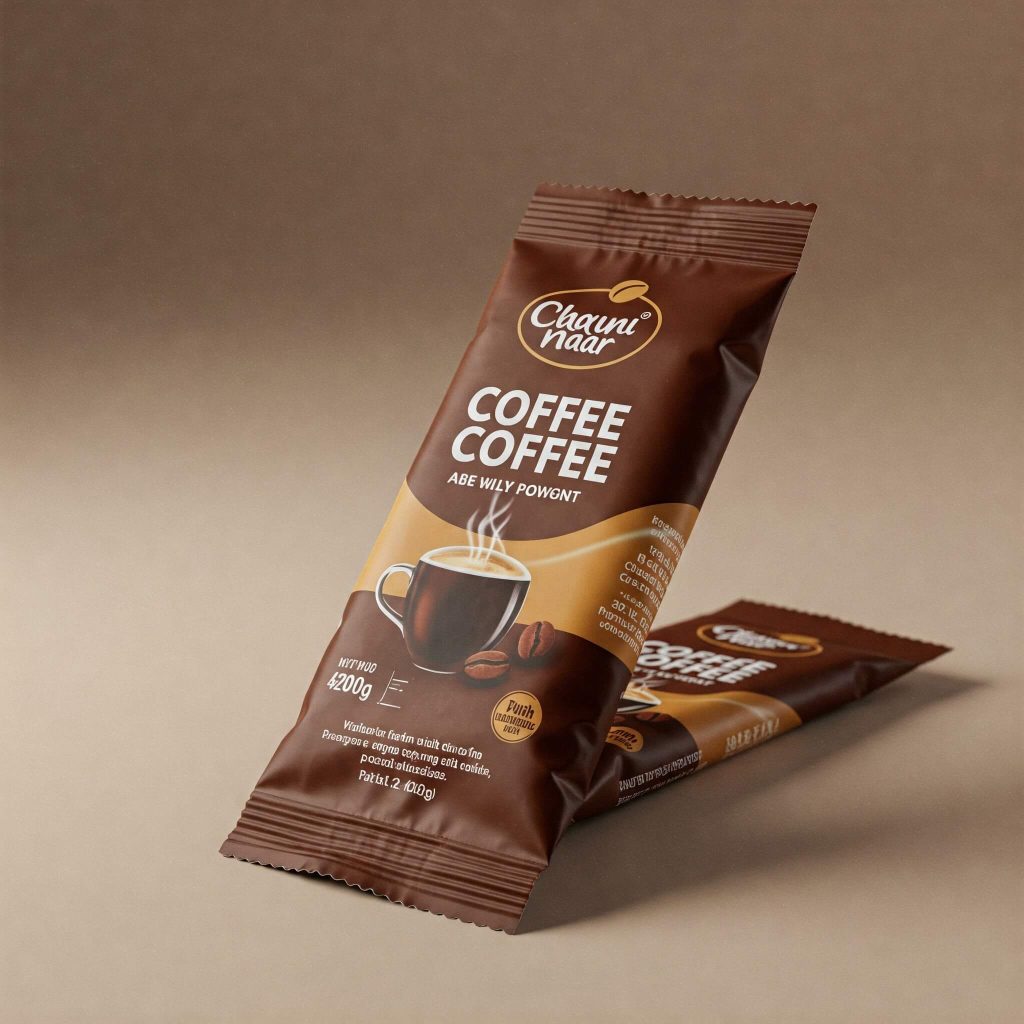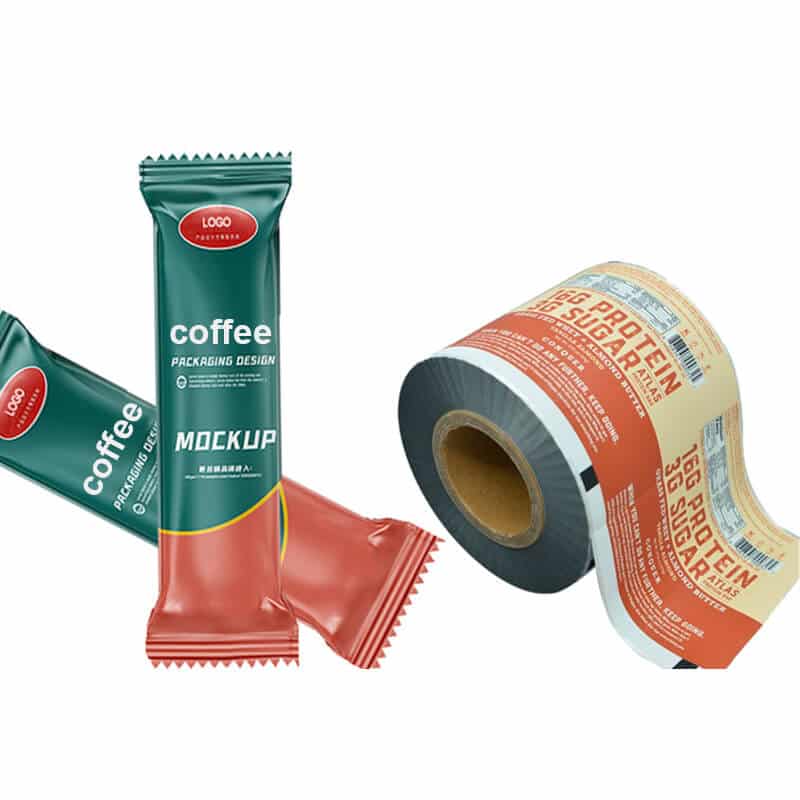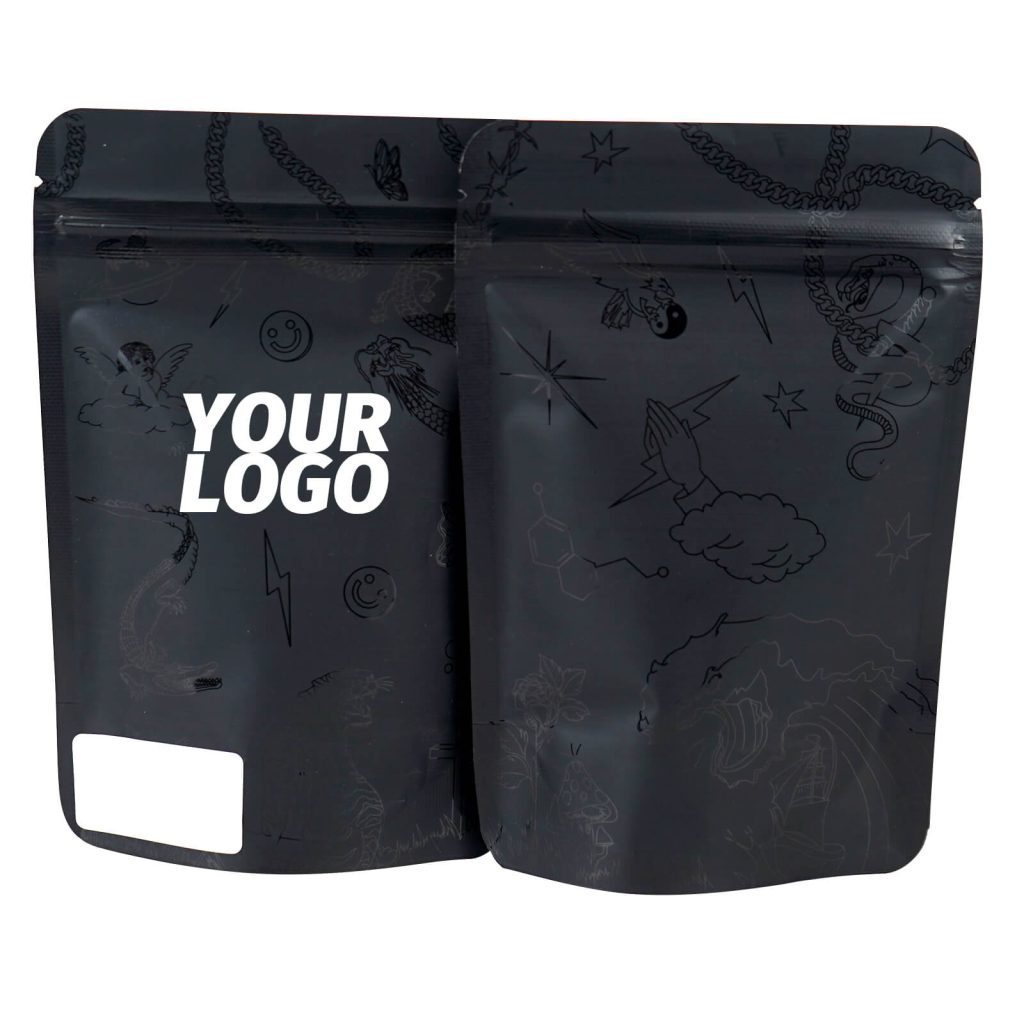Block bottom bag definition
A block bottom bag, also known as a flat-bottom bag or box-bottom bag, is a flexible packaging bag that combines the advantages of gusseted bags and flat-bottom bags. It features side gussets, with the bottom sides designed as gusseted folds that are sealed. This bag has a square or rectangular base, maximizing capacity and enabling it to stand upright independently. Brand information is prominently printed on the front, back, and sides of the packaging. Window designs can also be incorporated on the front and sides, allowing the contents inside to be clearly visible.
Suitable for ground coffee, coffee beans, protein powder, spices, and other powdered or solid products, it is also commonly used for snacks, cereals, pet food, baked goods, and a variety of other products.
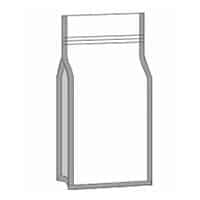
Materials and Accessories for block bottom bag
Plastic: Plastic is the most commonly used material for packaging bags, featuring a three- or four-layer structure such as PE+VMPET+PE or MOPP/PETAL/PE.
Paper Bags: Paper square-bottom bags are also safe and eco-friendly, frequently used for coffee beans or baked goods.
Eco-Friendly Materials: We offer biodegradable and recyclable square-bottom bags that are safe, green, and increasingly popular.
Accessories
Easy-tear zipper closure
Tin-sealed closure
Air vent
Product display window
These accessories are commonly used in coffee square bottom bags to preserve coffee freshness better.
Advantages of block bottom bag
Enhanced Capacity and Stability
The flat base evenly distributes weight, allowing the bag to stand upright on shelves. This means it can hold heavier items without rupturing or tipping over.
Easy Filling and Portability
Since the bag stands upright, products can be easily poured or scooped into it without disturbing the bag, and items are readily accessible.
Handles or hanging holes can be added to the top for convenient carrying and transport.
Full Brand Visibility
Five printable panels (front, back, sides, and bottom) provide multiple angles for brand display.
Square-bottom packaging stands upright on shelves, creating a more eye-catching appearance. This prominent display helps attract customer attention and boost product appeal. When customers clearly see the packaging and brand identity, they are more likely to choose these items. Effective shelf display can significantly boost sales and enhance brand recognition.
Excellent Sealing Properties
Gusseted bags can feature resealable zippers, wire closures, or heat-sealed edges to ensure product freshness and integrity.
Material Versatility
They can be manufactured from kraft paper, plastic film, laminated materials, or various other substrates.
Applications of block bottom bag
Snacks and Baked Goods
Candy and Desserts
Cosmetics: Bath Salts, Talcum Powder, Soap, etc.
Rice and Grains Seeds, Fertilizers, and Soil Conditioners
Infant Formula
Coffee
Nutritional Supplements and Fitness Powders
Retail and E-commerce: Premium Gift Packaging and Subscription Boxes
How to Choose the Right Packaging
1.Define Purpose and Contents
Determine product type: food, cosmetics, electronics, apparel, chemical raw materials, etc.
Assess physical properties: Does it require moisture resistance, oxidation protection, anti-static properties, freshness preservation, high-temperature tolerance, etc.?
Special requirements: e.g., food items need food-grade materials; liquids require high sealing integrity; heavy items demand high-strength materials.
When selecting packaging bags, choose those based on the item’s size, weight, and characteristics. Flat-bottom bags are suitable for snacks, coffee, protein powder, and various other food items.
2. Select Appropriate Materials
Gusseted bags typically feature composite structures with three or four layers, each serving distinct functions. For instance, the standard three-layer structure comprises MOPP/PETAL/PE, offering printing performance and optical properties, respectively.
The middle layer provides barrier properties and light blocking, while the inner layer ensures sealability and food contact safety.
These superior properties offer optimal support for showcasing the client’s packaging brand, allowing design aesthetics and eco-friendly attributes to be effectively presented through flat-bottom bag packaging.
3. Customizable Dimensions and Convenient Shipping
Our square bottom bags offer flexible thickness and size options tailored to client requirements, ensuring optimal bag solutions.
Typical thickness selections:
Lightweight items: 0.05mm–0.08mm
Heavy items or vacuum-packed goods: 0.10mm–0.15mm
Aluminum foil bags: ≥0.12mm
Additionally, square bottom bags stand upright for simple, efficient transport and rapid filling, enhancing customer usability.
Square-bottom bags have become a popular packaging choice, widely used for coffee, snacks, cat food, dog food, and more. They stand out prominently on shelves, effectively attracting consumers.
Compared to traditional packaging, they appear more premium and sophisticated, significantly boosting product brand recognition.
Comparison of block bottom bag vs. Traditional Bags
Square-bottom bags offer distinct advantages over traditional bags, such as flat-bottom bags and gusseted bags.
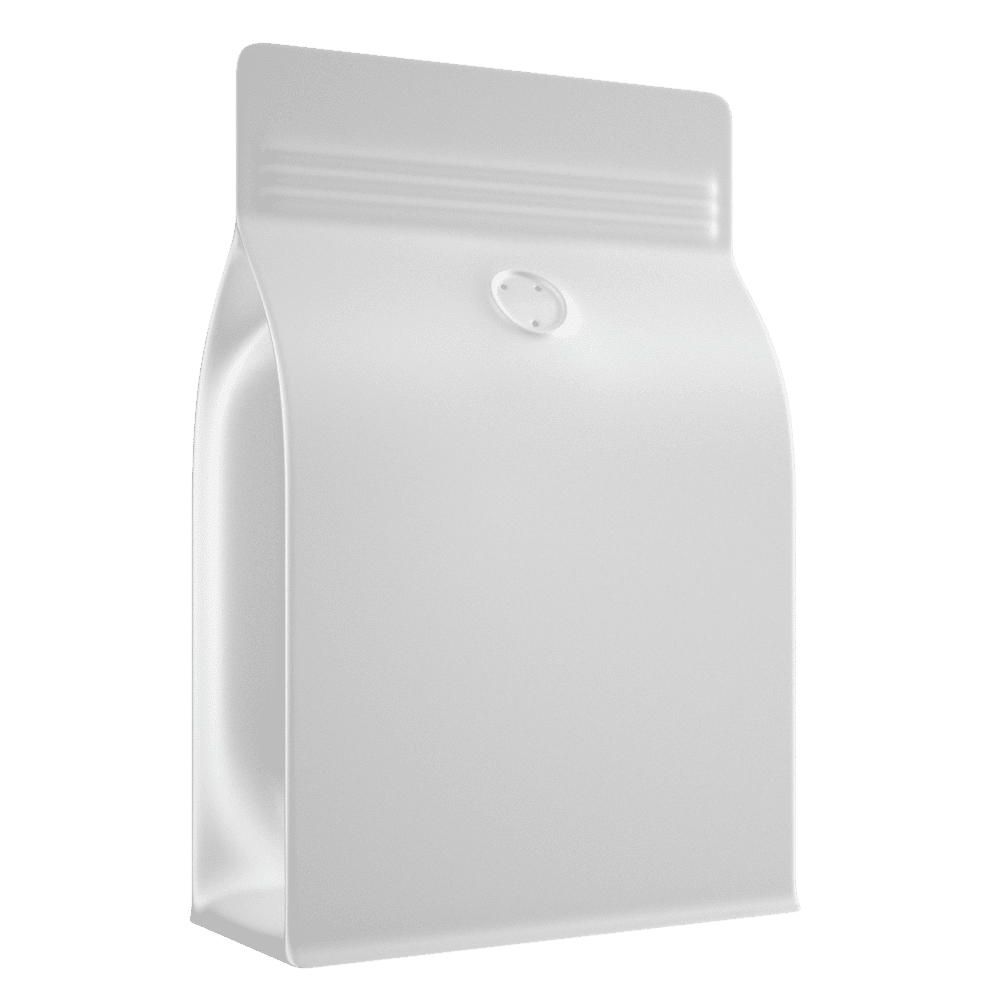
1. Distinct Appearance and Structure
Gusseted Bags: Feature 5 independent flat surfaces (front, back, left/right sides, bottom). The bottom lies flat, maintaining a structured, upright form that stands independently. Offers a greater display area and a premium aesthetic.
Traditional Packaging Bags: Typically consist of 2–3 flat surfaces. The bottom cannot lie completely flat; it must remain either flat or semi-structured, requiring support to stand upright.
2. Capacity and Space Utilization
Gusseted Bags: Hold more contents per unit volume (due to their vertical base), stack neatly to save warehouse space, and stand independently on shelves for an attractive display—ideal for grains, snacks, and pet food.
Traditional Bags: Smaller capacity, lower space efficiency, unstable stacking, bulky storage, require support or hanging for display.
3. Usability
Gusseted bags: Excellent compression resistance, strong bottom support, minimal deformation, multi-layer composite structure, superior sealing, and good printability for brand promotion. Widely used in automated packaging machines and high-end filling lines.
Traditional bags: Average load-bearing capacity, prone to bulging, simpler construction, susceptible to air leakage or moisture absorption.
4. Printing and Brand Display
Gusseted Bags: Printable on five sides (including bottom), allowing more information to be displayed. More three-dimensional and eye-catching, enhancing brand image.
Traditional Packaging Bags: Typically printed on two sides only, with less prominent brand printing.
5. Cost and Economy
Gusseted Bags: Higher cost (complex structure, multiple processes), generally 15%–40% more expensive than standard bags.
Traditional Packaging Bags: Lower cost, suitable for manufacturers focused on cost control, and more economical.

